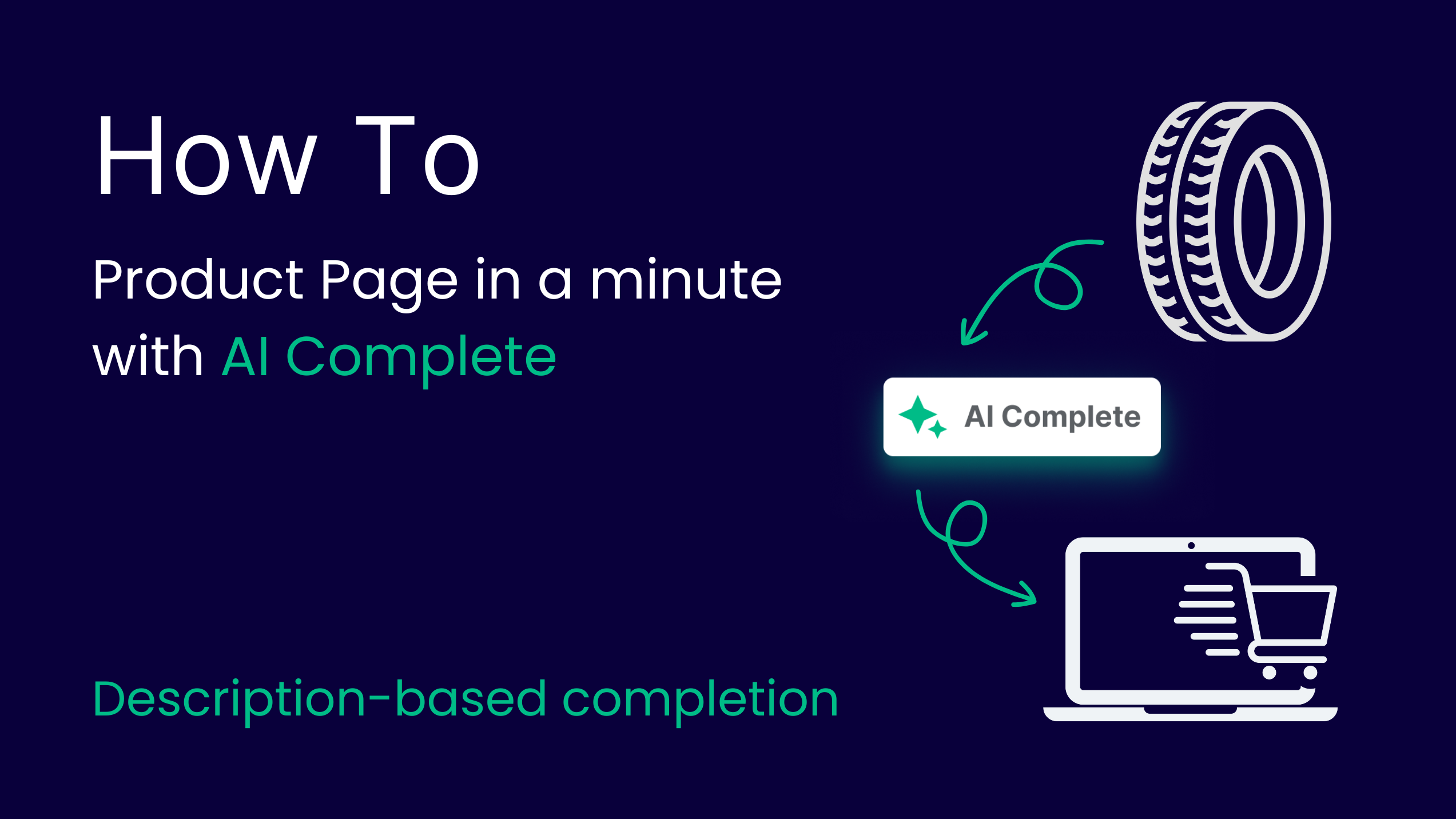If we were to have a contest for the most popular buzzword of the last decade in e-commerce - omnichannel would stand at least on the podium. This word contains much more than just multi-channel sales. It is a strategy which assumes that each sales channel is equally important and each deserves equal attention.
Today there are many points of contact between a customer and a product - mobile sales, marketplace, website or stationary stores. Sometimes there are also subscription sales or sales in the MLM model. Then it is important that all product data is consistent across all channels. This is one of the purposes of PIM.
PIM at the service of data accuracy
You can read quite a bit about the benefits of PIM on our blog, or in the ebook. It's a tool that is used not only to complete product information, but also to streamline work in product catalog teams, or to create product templates.
See also: All you need to know about PIM for the start
If we went back to the early days of e-commerce, we would see that the data consistency problem was much less because there were simply far fewer opportunities to reach customers. Besides an e-commerce platform and maybe a marketplace, there were no other places to sell your products. Now that there are a lot (and I mean A LOT) more stores, customers, and most importantly, data, it's important to keep that data in check and manage it skillfully.
PIM is a central hub that receives data from various sources (ERP, PDF files, Excel sheets, etc.) and sends it to various sales channels. It can be said that PIM is an exemplification of the whole idea of omnichannel - that is, maintaining a high level of consumer experience at every stage and in every shopping channel.
One of the key advantages of PIM is data consistency (or rather, correctness) across multiple distribution channels. Imagine a situation in which you sell in a marketplace, but also have catalog sales - it is essential that the data is properly aligned. PIM guards the order in the product catalog. You can export data to all or selected channels - depending on your pricing strategy or current promotions. You no longer have to worry that the buyer will see an incorrect price (which is always a disadvantage for the seller) or incomplete product information - unclear photos, lack of information about the material of manufacture or available sizes.

Product in omnichannel
It was so in the early days of online sales, and it is so now, that the customer is the center of all activities. The key is not only to make the sale, but also to provide them with the best possible experience during the entire purchase path. The customer is always at the core - it's a general rule that never goes out of date.
However, it is equally worth considering the role of the product itself in omnichannel and how it influences purchase decisions. Customer interaction via each channel is slightly different. PIM ensures that our data is correct and aligned - and that the customer has the best possible shopping experience. Lack of consistency and correctness of data across channels can cause "cognitive dissonance" in the customer, who can be confused by different information and, as a result, negatively impact the brand image.
PIM is not just a place to collect data from various sources and pass it on - to various distribution channels. It is a place where you can enter product information, add images, videos, design product templates. PIM is a tool where the product is at the center, but it also serves to better the work of the entire team that manages product data.
Key advantages of PIM in omnichannel:
- Sending correct data to different distribution channels in real time.
- A central data source that enables you to manage all data within a single platform.
- Adapt to the business context and specifics of individual channels.
Apart from the obvious advantages that fit into the omnichannel environment, it is worth mentioning that PIM also influences a positive shopping experience in users, fewer abandoned shopping carts or returns. A well-described product means less risk of disappointment when unpacking the package.
Go global with Ergonode
Omnichannel isn't just about selling in multiple channels, it's also about selling in multiple markets - and therefore multiple languages. PIM is a tool that will enable you to scale your business and have more control over the data you distribute to different channels and to different countries. Importantly, the data will also be contextually tailored to specific markets. You don't have to worry about incorrect translations of product information in different languages - thanks to automatic translation features, each product will be well described. Ergonode offers many options for managing the language versions of all content. It's not only about the interface language itself, but description of products or names of user-created attributes.
Is omnichannel possible today without PIM?
We feel that in order to take full advantage of the opportunities offered by omnichannel, to be able to reach customers through various channels and provide them with the maximum shopping experience in each of them, PIM is an essential piece of the puzzle.
See also: 2021 - the year of PIM?
PIM is not just for transferring product information from excel to the store platform. It's a hub for managing that data - creating product templates tailored to assortments and product families, as well as setting data completeness levels. It would also be simplistic to say that PIM is a tool exclusively for e-commerce - in fact, it can be used by all organizations that work with data and want to streamline workflow processes between team members.







